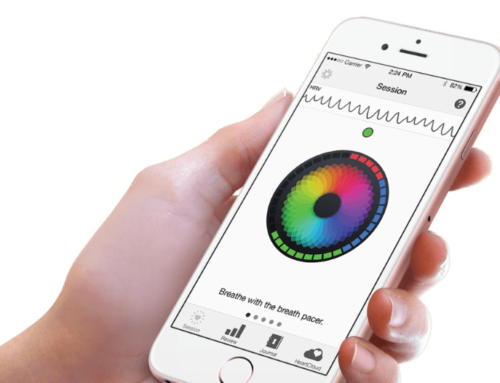 The mind-body connection is the intelligent way our body and mind inform each other of our personal wellness. Our thoughts, feelings, attitudes, and beliefs affect our biology and our biology is constantly sending us cues about our physical health and well-being. In an ideal scenario, this two-way communication allows us to navigate a world full of stressors and pressures while recognizing what adjustments we can make to support and stay true to ourselves.
The mind-body connection is the intelligent way our body and mind inform each other of our personal wellness. Our thoughts, feelings, attitudes, and beliefs affect our biology and our biology is constantly sending us cues about our physical health and well-being. In an ideal scenario, this two-way communication allows us to navigate a world full of stressors and pressures while recognizing what adjustments we can make to support and stay true to ourselves.
For individuals living with an eating disorder or for those who have major insecurities about their bodies, there is often a strong desire for the body to conform to what the mind wants.
In fact, science has proven that the emotions we feel can show up as sensations in specific areas of our bodies depending on what emotion we are feeling. Since many eating disorders develop out of a desire not to feel, those sensations can be very overwhelming.
Over time, people with eating disorders may have learned to disembody to get away from their feelings thereby experiencing stressful events as though they were floating outside of their body. Alternatively, they may experience a constant battle of emotions and sensations but have no ability to distinguish one from the other. Or they may just feel numb, nothing at all. It has been shown that eating disorder patients are considerably vulnerable to developing alexithymia than control groups. Alexithymia is defined not by the absence of feelings but by the inability to identify and describe emotions in the self.
Rebuilding body trust and the mind-body connection is really a process of building self-awareness and claiming one’s true self. It ultimately involves trusting your instincts, and knowing you have a unique voice, perspective, and place in this world. Here are a few of the mind-body techniques I specifically offer for those who are living with eating disorders:
- Body Scans are the most basic way to draw attention into the body. While it might at first feel a little confrontational, many of my clients find that once they do it a few times, it can be a relaxing and enjoyable experience. Rather than focusing on the parts of your body you aren’t so fond of, getting an opportunity to feel the sensations in the fingers, toes and the soles of the feet can start to build a new relationship to the energy and conscious that lives inside our bodies!
- Kripalu (compassion) Yoga offers a tool called “BRFWA” It stands for Breathe, Relax, Feel, Watch and Allow which is the process it invites us to follow. It is a way of training the nervous system to stay calm and curious rather than becoming reactive during times of increased internal or external stress. Kripalu yoga teaches us that every sensation and emotion is like a wave, with a crest that will eventually peak and subside.
- Comparing sensations can be a fun way to bring curiosity into the body. I invite yoga groups to stretch or massage one side of their body. Then I have them take a few moments to feel the difference between both sides. Often smiles come across their faces as they feel a difference and realize they can positively affect the way their body feels. When we take time to notice, we build self-awareness and we find the body has some delightful surprises for us.
- Somatic expressive therapy uses expressive arts (movement, writing, drawing) to give voice to the emotional or physical sensations we might not have words for. It is a powerful practice for helping people (especially those with alexithymia) better interpret the language of their bodies. As I guide individuals into poses that create strong sensations – I ask them to imagine what color the sensation would be or if there is a story, image or phrase the sensation is trying to share. In private sessions, I invite them to write or draw their senses which can guide them into their deeper self and enhance body awareness.
- Mantra (a word or phrase repeated) is an easy practice. Most of us spend our time ruminating about the past or the future. Any time we find a way to be present, we inherently experience a deeper connection to our bodies which are always offering feedback about the present. “Slow down” was the first mantra I ever experimented with. Said throughout the day, it helped untangle many thought and reaction patterns I didn’t know existed.
It is important to remember that as remarkable as the mind-body connection is, we must assume there are equally remarkable and potent reasons for this connection to have been severed. Rebuilding the mind-body connection and body trust takes time, consistency, patience and courage. It cannot be achieved through force or expectation. So start where you are. Choose a practice you are comfortable with. Slowly increase the time you practice. Know you can always stop if it gets too much. But try again and try again. I promise, deep inside your body, your true self is waiting for you to find it, explore it and fall in love with it.
####
Erin LoPorto, IAYT, Certified Yoga Therapist, Health and Life Coach, E-RYT500, holds advanced training in yoga and yoga therapy. She completed a two-year internship at Kripalu Center for Yoga and Health where she was able to study with world leaders in the fields of yoga, Ayurveda, energy healing, meditation and the mind-body connection. She is a certified teacher of Kripalu Yoga, PranaFlow and TriYoga Therapy. She has collected over 1000 hours of training in Yoga Therapy. She is also a talented bodyworker; she holds certifications in Reiki I and II, Multi-Dimensional Transformational Healing, Access Bars and Lotus Palm Thai Yoga Massage. Additionally, Erin studied somatic expressive therapy through the Leven Institute and has taken a particular interest in trauma treatment and eating disorder recovery. She has been teaching yoga at Walden Behavioral Care for Eating Disorders since 2013 and Revolution Community Yoga since it first opened in 2012. She also has a private practice at www.erinloporto.com.






